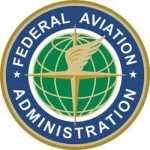Six Recommendations Passed To The FAA
 The NTSB has adopted a study which concludes that GA
airplanes equipped with airbags provide additional protection to
occupants in accidents involving survivable forward impacts.
The NTSB has adopted a study which concludes that GA
airplanes equipped with airbags provide additional protection to
occupants in accidents involving survivable forward impacts.
Airbags are designed to mitigate head and upper body injuries
and are installed in the lap belt or shoulder harness portions of
the restraint system. They were first approved for use in the pilot
and co-pilot seats in GA aircraft in 2003. Currently, there are
nearly 18,000 airbag-equipped seats in over 7,000 of the 224,000 GA
aircraft in the United States.
"Although airbags have been mandated in automobiles for over a
decade, the aviation industry has no such requirement for small
aircraft," said NTSB Chairman Deborah A.P. Hersman on Tuesday. "The
good news is that over 30 manufacturers have stepped up to the
plate and offer airbags as standard or optional equipment."
The study, which examined 88 accidents involving airbag-equipped
airplanes that occurred between 2006 and 2009, found no instances
where the airbag caused harm in properly restrained
occupants. In addition, the study found 10 survivable
accidents in which the crash forces were severe enough to cause
injury and/or to deploy the airbag. Within the group of 10
accidents, 12 occupants experienced airbag deployments, and the
study found that the airbag likely mitigated injuries for two of
the occupants.
The study also noted that there were no negative consequences as
a result of airbag deployments. For instance, there were no cases
in which the airbags were expected to deploy but did not. Nor were
there any cases that involved airbags deploying under unexpected
circumstances, hindering egress, fueling post-crash fires or
interfering with rescue attempts. Yet investigators did uncover
some safety issues with restraint systems.
One such issue involved the incorrect usage or adjustment of
seat belts. In certain aircraft types, the seat belts in the left
and right seats can become reversed, which could result in the
wrong airbag being activated if only one of the seats is
occupied.
There were also concerns with optimal airbag protection for
occupants whose body mass indexes (BMI) classified them as either
overweight or obese (BMIs of 25 or higher). The NTSB questions
whether the airbag-equipped restraints were designed and tested
with the high-BMI population in mind.
An additional finding of this study was the strong affirmation
that correctly installed shoulder harness/lap belt combinations
provide significantly greater protection in GA accidents than that
offered by a lap belt alone. Based on an analysis of over 37,000 GA
accidents, the Board concluded that the risk of fatal or serious
injury was 50 percent higher when an occupant was only restrained
by a lap belt as compared to the combination lap belt and shoulder
harness.
"The simplest and cheapest improvement to the safety of general
aviation aircraft occupants is the mandatory installation of
shoulder harnesses," said Hersman.
 The five-member Board voted to adopt six safety
recommendations, all directed to the FAA:
The five-member Board voted to adopt six safety
recommendations, all directed to the FAA:
- Require manufacturers to modify restraint systems vulnerable to
being used incorrectly in newly built GA airplanes and to modify
restraints in existing airplanes.
- Revise the guidance and certification standards for restraint
systems to reduce the likelihood of misuse.
- Modify the guidance to GA airbag manufacturers as to how they
should demonstrate that an airbag design provides adequate
protection for a greater range of body sizes, including very small
and very large individuals.
- Require the retrofitting of shoulder harnesses on all general
aviation airplanes that are not currently equipped with such
restraints.
- Evaluate the feasibility of requiring airbag-equipped aircraft
to capture and record crash dynamics data to determine whether the
system performed as designed.
- Develop a system to track safety equipment, such as restraint
systems, airbags, and aircraft parachutes, designed to improve
crash outcomes.
 Unfortunate... ANN/SportPlane Resource Guide Adds To Cautionary Advisories
Unfortunate... ANN/SportPlane Resource Guide Adds To Cautionary Advisories ANN FAQ: Turn On Post Notifications
ANN FAQ: Turn On Post Notifications ANN's Daily Aero-Term (04.29.24): Visual Approach Slope Indicator (VASI)
ANN's Daily Aero-Term (04.29.24): Visual Approach Slope Indicator (VASI) ANN's Daily Aero-Term (04.28.24): Airport Marking Aids
ANN's Daily Aero-Term (04.28.24): Airport Marking Aids ANN's Daily Aero-Linx (04.28.24)
ANN's Daily Aero-Linx (04.28.24)




